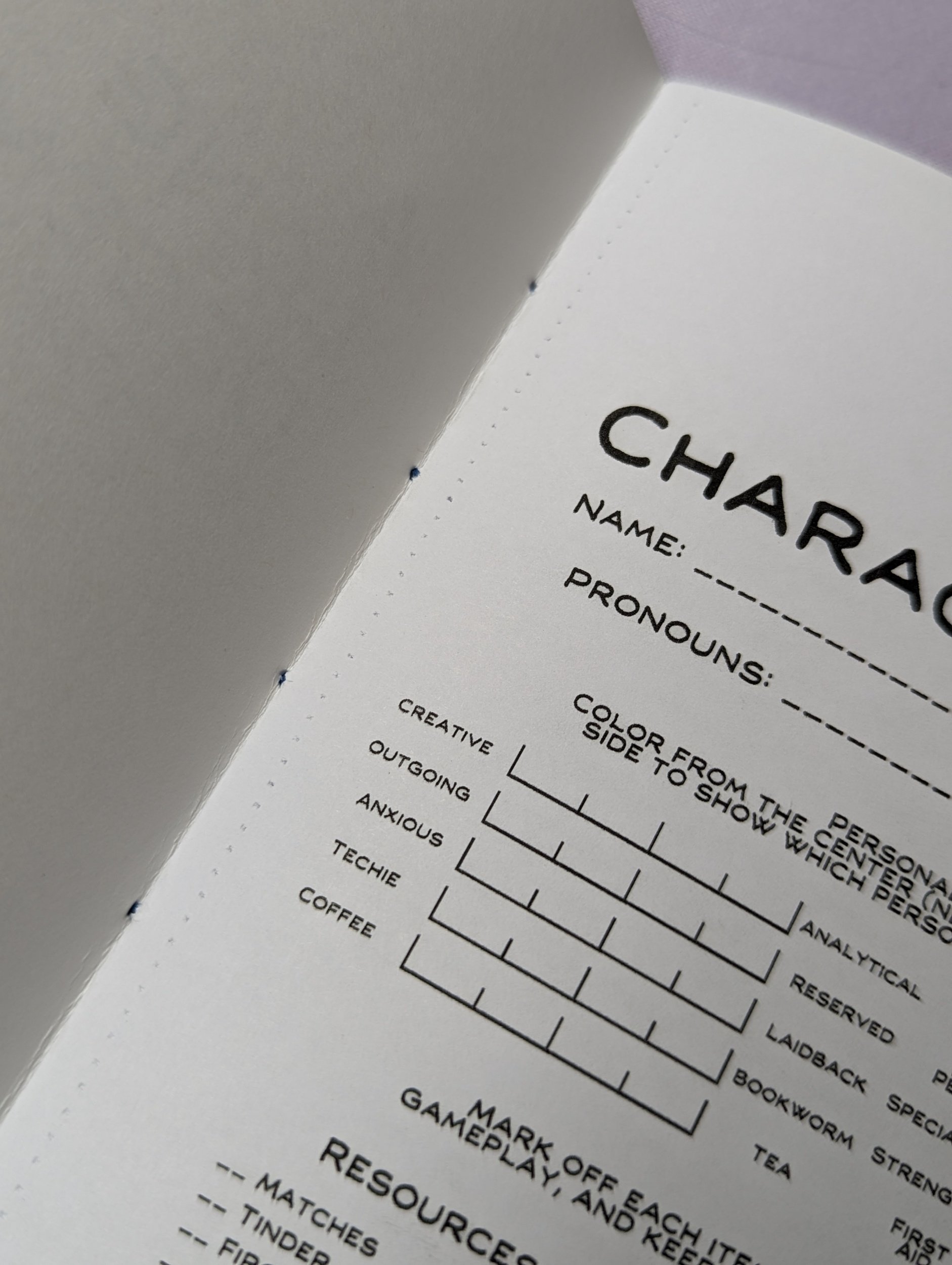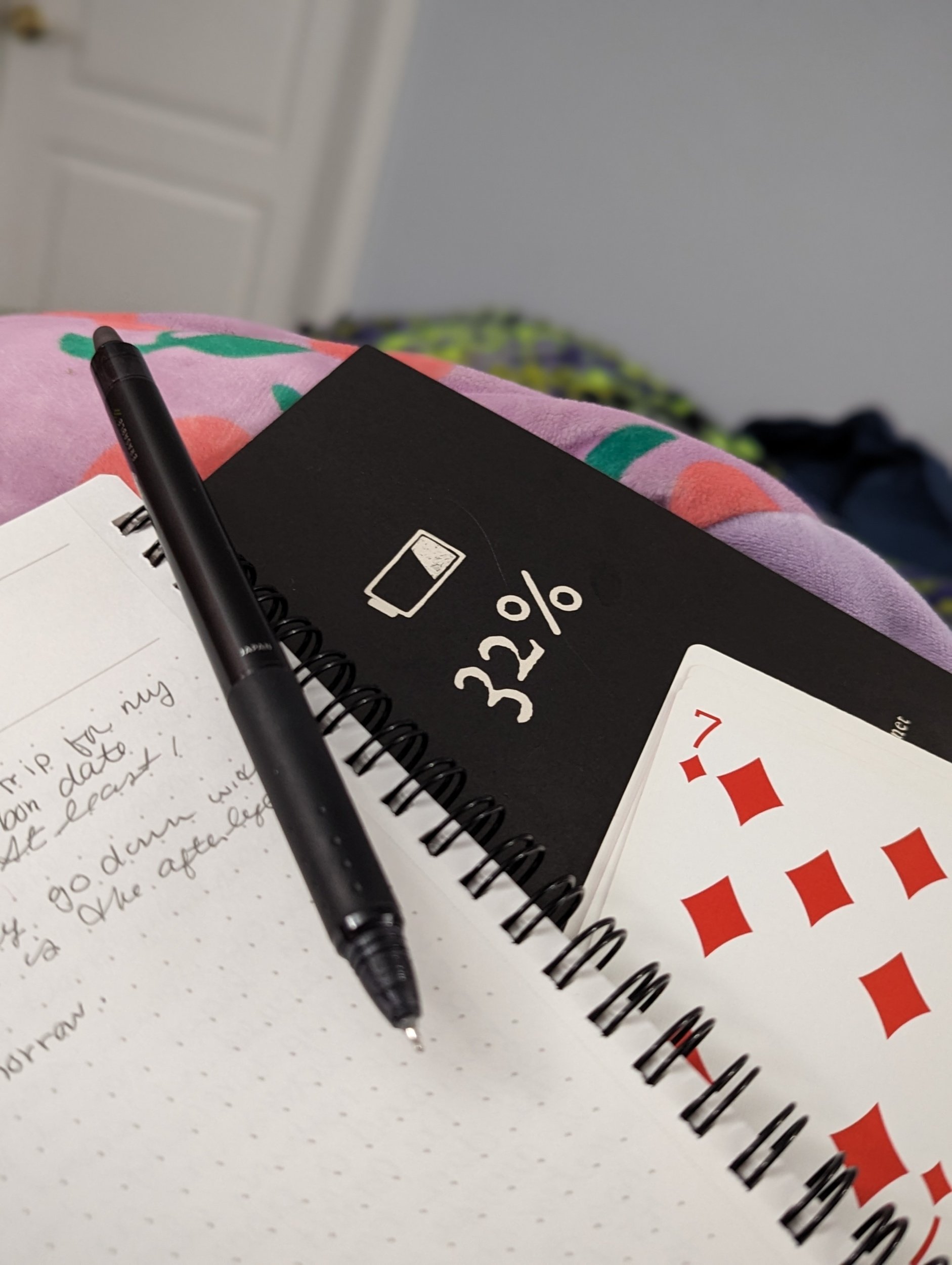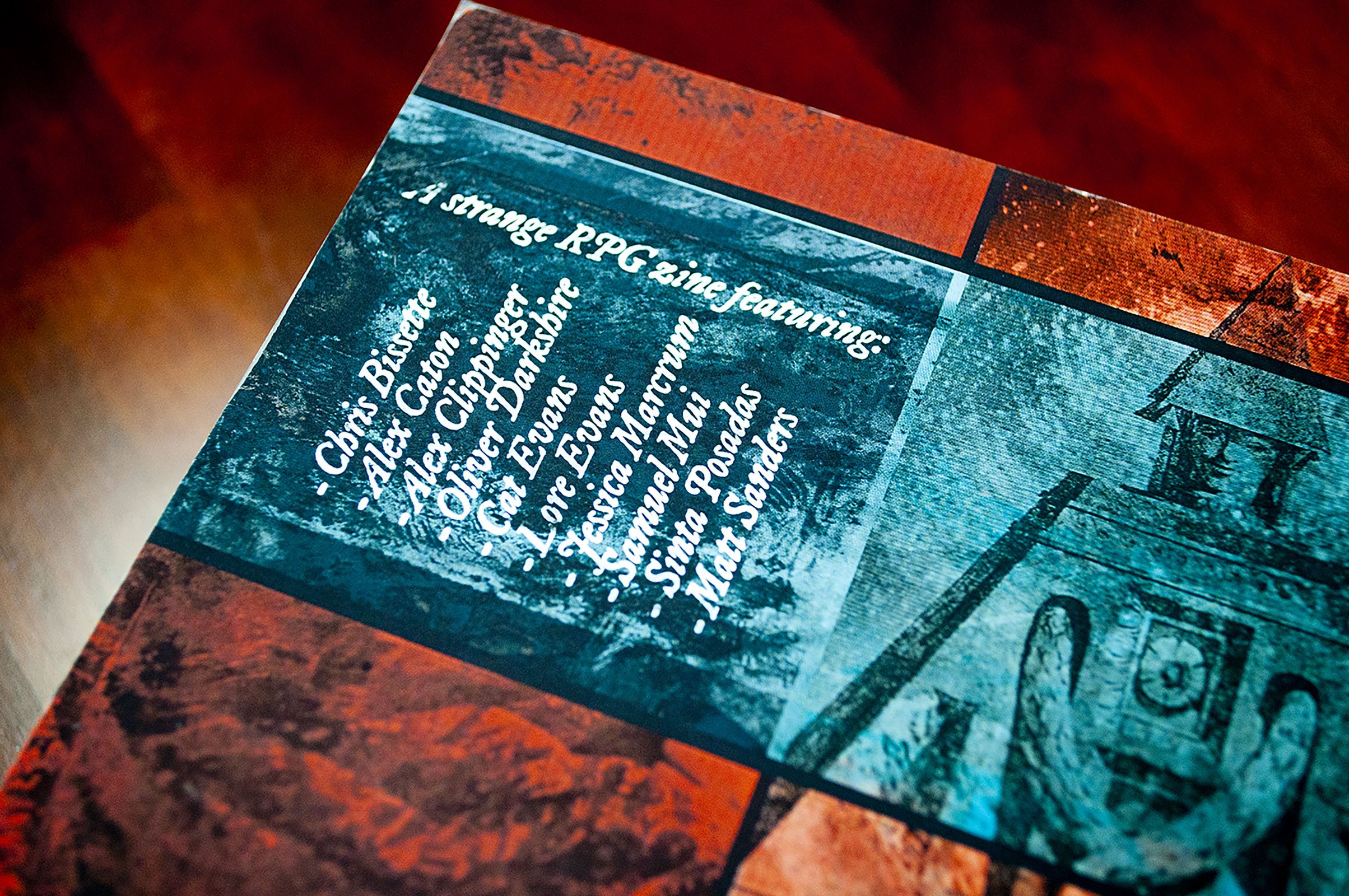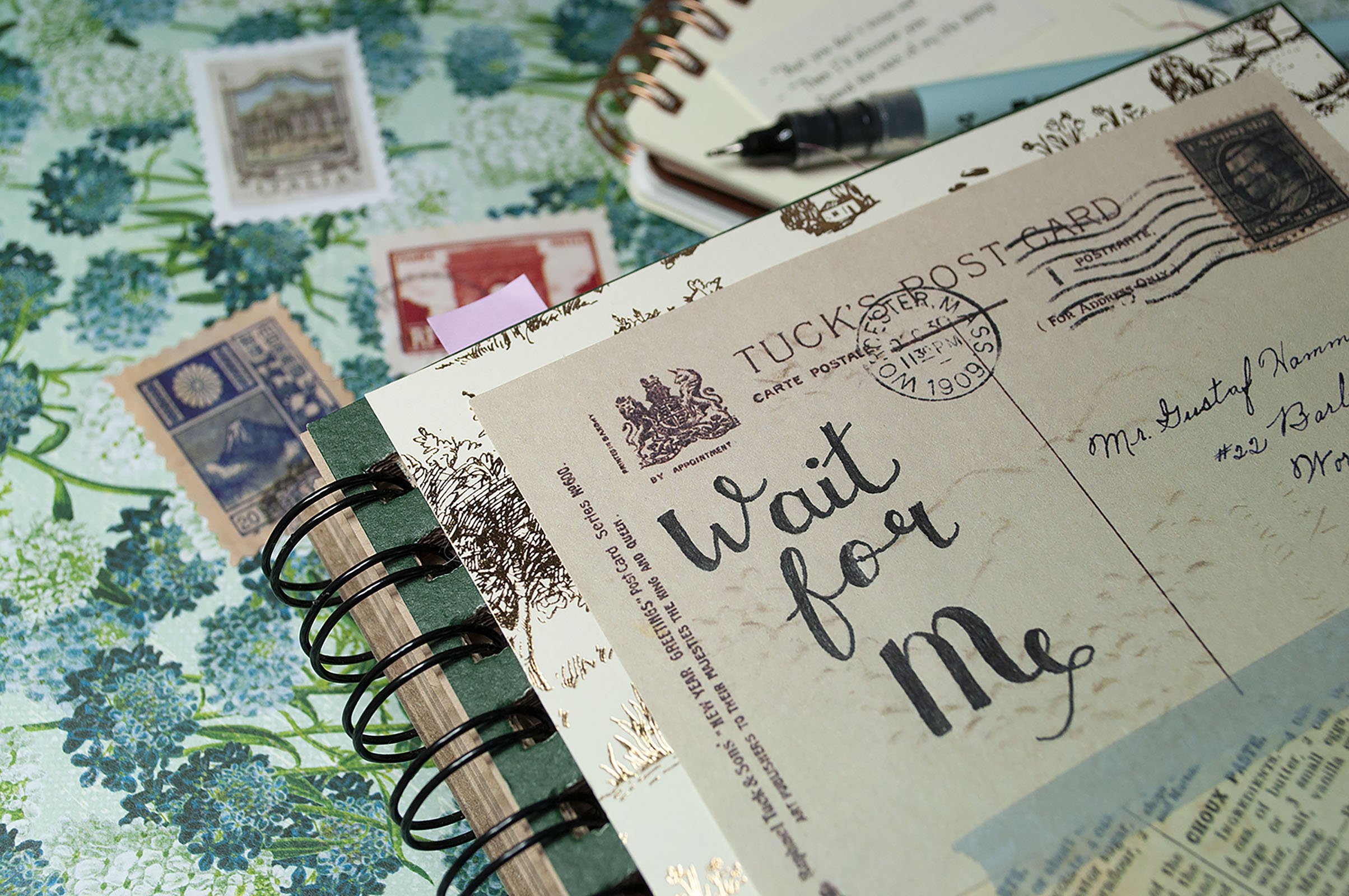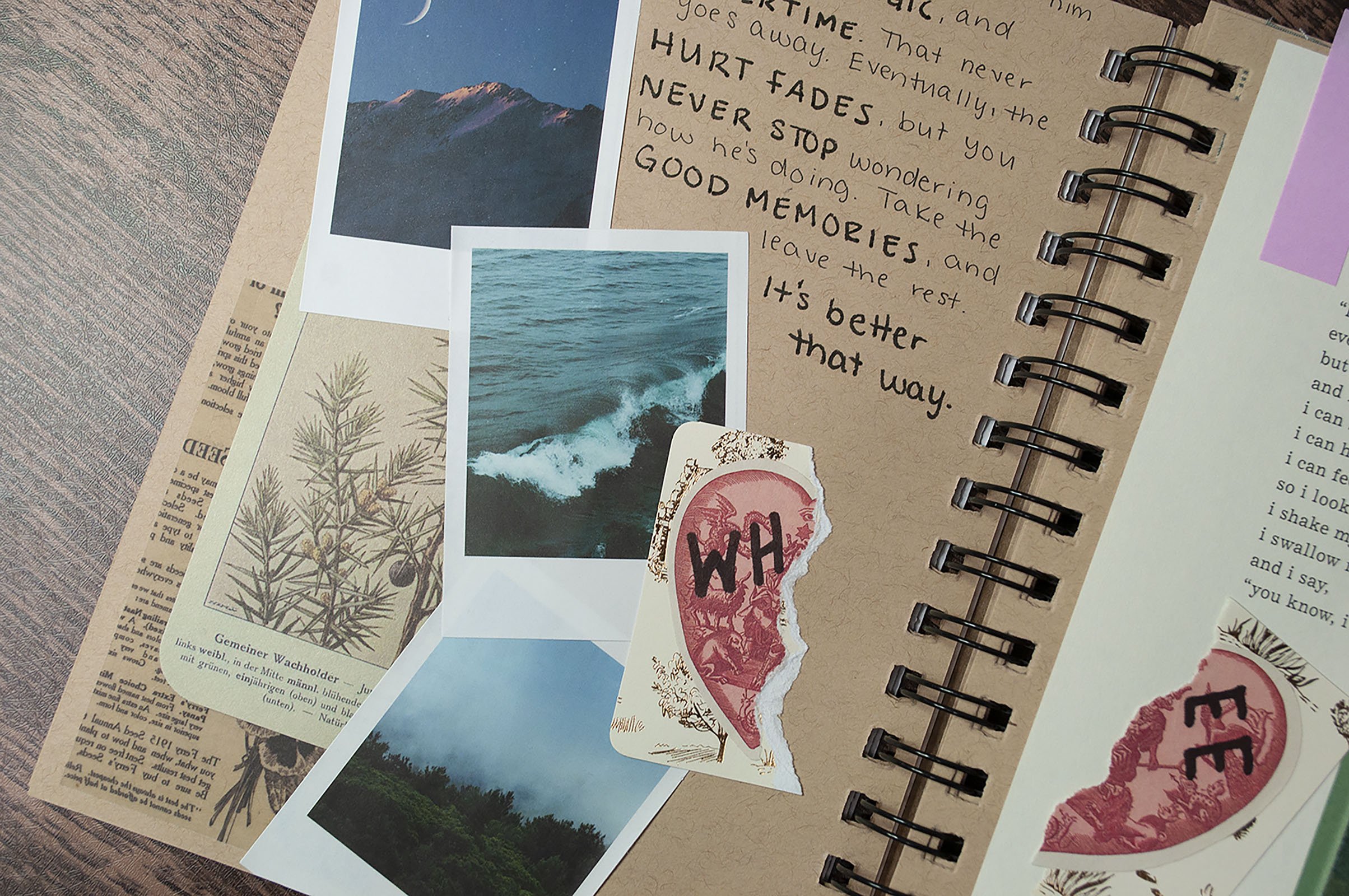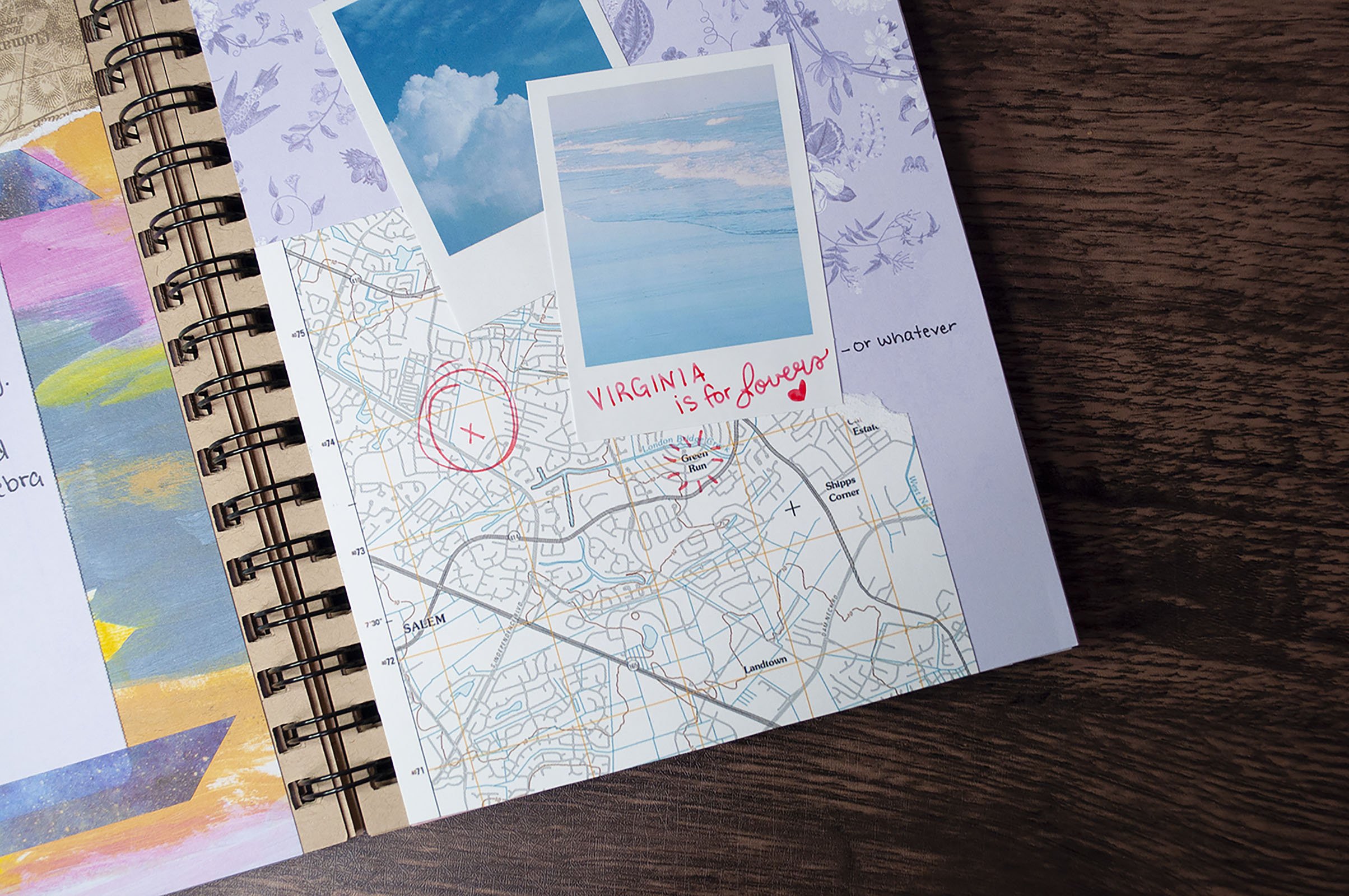I don’t know, honestly. They brought me on this trip for my ability to pilot and repair the ship, not carbon date footprints. Ugh. I shouldn’t be wallowing. At least I survived the crash, somehow.
Doesn’t the pilot - The Captain - usually go down with their ship? Maybe I’m dead. Maybe this is the afterlife or some sort of in-between place.
Whatever. Goodnight, notebook.
22.8% - Day Three
7 of Diamonds, 6 on the die: Today was an interesting day. I managed to dig some communications parts out of the wreckage of the drop pod! Definitely a blessing; shouldn’t need too much more to get a transponder up and running. It’s starting to look more and more like I might actually get off the planet alive.
For away from my “camp site,” where I walked to gather more wood for tonight’s fire (haven’t blown up, yet!), I noticed more footprints but this time they’re smaller. More like mice, or maybe burrowing creatures of some kind. I wonder if maybe they’ve gone underground. Perhaps they only come out at night? I don’t know. Either way, I still haven’t seen any creatures, but it’s interesting that I keep seeing signs of them everywhere.
I don’t want to wander too far from my campsite, but it’s becoming harder to find the resources I need nearby. I’m hoping I can find more of those tech parts, so I can piece this all together and get out of here fast.
18.2% - Day Four
8 of Clubs, 3 on the die: During my supply run today, I noticed a glimmer in the distance, near some mountains. As I approached and the spot grew bigger, it was obvious that there was some sort of bunker or something in the side of the mountain: The light was reflecting off a huge door set into the stone. At least as twice as tall as me, and four times as wide as my arm span.
There’s a keypad next to the door. The buttons don’t use the galactic standard alphanumeric glyphs, so… I have no idea what I pressed. But the door is still sealed. Took me a while to get there and back to camp, but it gave me a lot to think about. There were all these stories back on Earth about folks who were prepping for the end of the world, and they had these huge bunkers full of stuff. In the end, it really didn’t matter. The whole planet is just a barren wasteland, now.
But it made me think about what could have happened here. Was it a similar fate, where the planet died underneath its inhabitants of people thought they could outlast the disaster?
I wish I knew. Hell, I wish I knew where I am.
Maybe I’ll find the code to the door, and learn this world’s secrets before I die.
13.6% - Day Five
3 of Diamonds, 2 on the die: I went back to the doors in the mountain today, to scout the area and see what I could find. There’s a trickle of what looks like water flowing out of the rock a few hundred meters to the left of the door; not deep or fast enough to be a river, but looks like enough water that I wish I had a testing kit on me. It would be nice to have some fresh water, rather than this warm recycled garbage in my suit.
Still don’t have a clue about the glyphs on the keypad. Why couldn’t this place just so happen to use a convenient language I happen to know?
UGH. I guess it isn’t quite like the stories, where it all works out in the end.
We’re getting down to the last few percent in my suit’s battery, and I’m getting nervous. Managed to scrounge some extra rations out of the wreckage today, but not extra communications parts. I only need a few more to get the transponder working, I just know it. If I can find them, I can be rescued. I can go home.
God, I really want to go home.
9% - Day Six
Queen of Clubs, 6 on the die: Woke up this morning to a proximity alarm in my suit going off, to find myself face to face with a… Moose-like creature? Massive, with four legs and shaggy fur. Giant antlers. It was snuffling at my feet, and I scared it off when I started awake.
There was a herd of them outside my shelter. Just… So many not-moose, as far as the eye could see. They covered the small plateau where I have my shelter. It was kind of incredible.
Another day of digging in the rubble of the drop ship, another day of dreaming what’s behind the doors in the mountain, another day of that thrumming bass I can’t seem to ignore. But, one major difference: I found the last communicator parts I need to fix the transponder! I honestly can’t believe it. At the rate my suit’s battery is draining, I don’t know if I’ll make it to rescue. There’s still so much that could go wrong before they get here.
But I’ll get the transponder up tonight. And maybe the not-moose was a sign. To have hope. Maybe they’ll get here in time.
Maybe I’ll be saved. I guess we’ll find out together, you and I.
4.4% - Day Seven
3 of Clubs, 6 on the die: The transponder is working! It made little boops all night long, which was almost enough to drive me mad, but it means it’s working so I can’t be too upset.
I poked at the pile of wreckage that’s left of the dropship, and I found a random interstellar language primer. Flipping through it, there’s actually a page that matches up with the glyphs from the touchpad by the doors. As much as I want to go back there, explore this ruin - this mystery - I can’t risk it. If anything happens to me today, I’m in big trouble. I can’t even go the stream again. Nowhere.
I hope someone hears the beacon. I hope someone arrives soon. I don’t want to die here.
But if I do: Please take this journal, and the primer. Go toward the mountains, find the door. Learn about this place. Do let the opportunity go to waste.
See you on the other side.
0% - Day Eight


